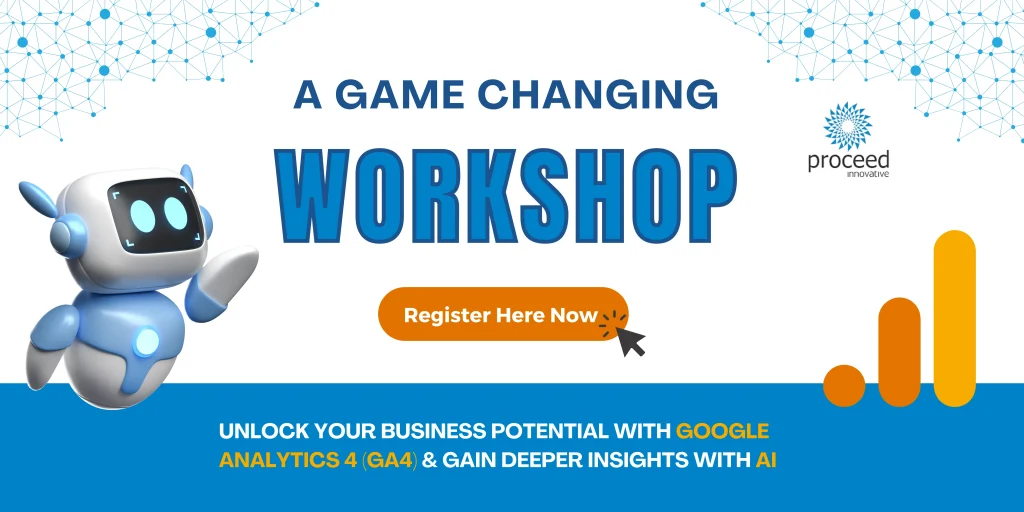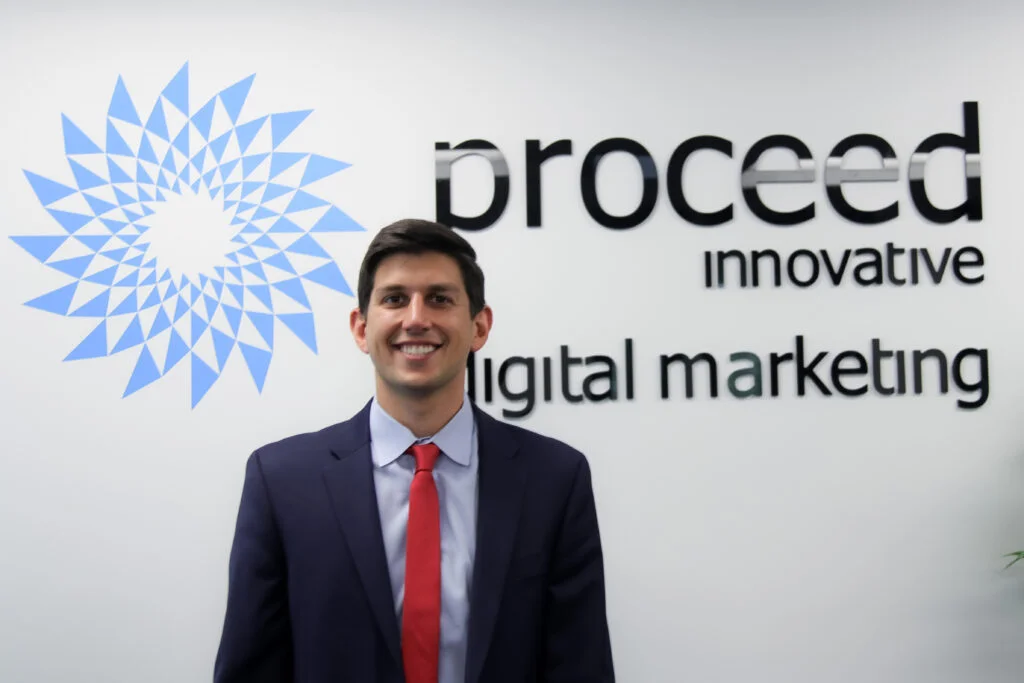Unlock Your Business Potential with Google Analytics 4 (GA4) & Gain Deeper Insights with AI
Empower your team with GA4 expertise and harness the power of AI-driven analytics to transform your marketing insights and drive measurable growth.
Introduction & Overview
Bring Your Analytics into the Future with GA4 & AI Google Analytics 4 (GA4) is not just an upgrade—it’s a reimagining of how we track and understand user behavior across channels and devices. When combined with cutting-edge AI-driven tools and techniques, GA4 can reveal patterns, predict trends, and guide strategic decisions with unprecedented clarity.
Are you ready to transform your website data into actionable insights?
Join our free Google Analytics 4 (GA4) workshop at Proceed Innovative. In just two hours, our experts will equip you with the hands-on skills you need to confidently navigate Google Analytics 4, helping you make data-driven decisions that propel your business forward.
Why This Workshop is Essential:
- Immediate Impact: Learn skills you can apply the same day.
- Expert Guidance: Receive practical tips from industry professionals.
- Data Mastery: Discover how to use GA4 to fuel business growth.
- Date: TBD
- Location: 1501 Woodfield Rd. Suite 112E, Schaumburg, IL 60173
- Time: TBD
- Cost: Free – Limited Spots Available
- Bonus: Complimentary Lunch is Included
Who Is This Workshop For?
This workshop is designed for two types of people:
- Marketing executives who are leading online marketing initiatives need a clear, actionable strategy.
- Business owners who want to understand the big picture without diving into GA4 every day. You need the insights, not the hassle.
This workshop is for you if you’re responsible for driving results and making sense of the numbers.
What You Will Learn from the GA4 Workshop:

The Essentials of Google Analytics 4
- Universal Analytics vs. GA4
- GA4 Benefits for CMOs and Marketing Managers
- GA4 and Modern Marketing Strategies

Navigate the GA4 Interface with Confidence
- GA4 Dashboard Overview
- Key Features and Tools
- Customizing the Interface for Marketing Goals

Setting Up GA4 for Success
- Configuring Settings
- Best Practices for Event Tracking
- Setting up Custom Events and Conversions
Why Choose Proceed Innovative?
- Certified GA4 Experts: Our team is certified and up-to-date with the latest GA4 and AI best practices.
- Practical Industry Experience: We’ve helped clients across e-commerce, lead generation, healthcare, and more achieve success with GA4 and AI.
- Custom Solutions: No one-size-fits-all approach. We tailor every training, implementation, and AI integration to your unique goals and KPIs.
- Ongoing Support & Consulting: Our relationship doesn’t end after setup. We provide continuous support, analysis, and optimization to help you grow.
Feedback from past participants
“The Google Analytics 4 workshop was incredibly insightful! The detailed comparison between GA4 and Universal Analytics helped us understand the benefits of transitioning to the new platform. The presentation on the GA4 data model and reports provided clear examples of how we can analyze data more effectively and apply this knowledge to improve our business strategies. The emphasis on reports was particularly helpful, allowing us to see how to leverage this information for better decision-making. I highly recommend this workshop to anyone looking to get ahead in digital analytics!”
Aneta, Owner of Art Classes Studio, Schaumburg, IL
Ready to Elevate Your Analytics with GA4 & AI?
Don’t let valuable insights remain hidden in your data. Contact us today to learn how our GA4 training, implementation, and AI-driven analytics services can help you stay ahead of the competition.
Register Now – Spots are Limited!
Map & Directions:
View Larger MapTestimonials
























